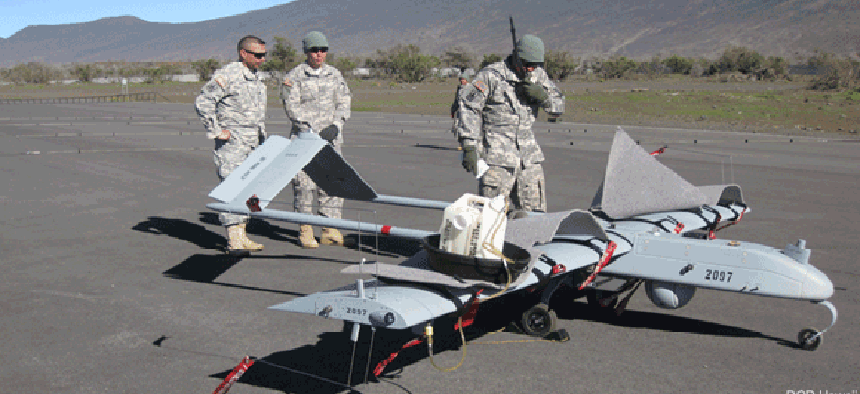UAVs to power wireless -- anywhere


Connecting state and local government leaders
DARPA's Mobile Hotspots program aims to deliver secure, high-speed wireless networks to troops in remote locations using millimeter-wave wireless transceivers on small unmanned aerial vehicles.
The next time a major hurricane or earthquake strikes, wiping out cell and wireless communications, first responders and citizens alike may be able to get gigabit-per-second wireless service from drones dispatched to the skies over the affected areas.
DARPA’s Mobile Hotspots program, just entering its second phase of development, aims to deliver secure, high-speed wireless networks to troops in remote locations, thus giving them fast and reliable access to intelligence and reconnaissance information.
While DARPA’s project is targeting military applications, the same technologies could be helpful during disasters and potentially for those conducting search-and-rescue operations in remote areas.
The key to the program is deploying millimeter-wave wireless transceivers on small unmanned aerial vehicles (UAVs). And the challenge of doing that, of course, is engineering the components into footprints small and light enough for UAVs.

Millimeter-wave communications, which offers bandwidth comparable to fiber optics, was actually first demonstrated in the 1890s. While Guglielmo Marconi was experimenting with radio waves at very low frequencies of 30-300 kHz, J.C. Bose first demonstrated millimeter-wave transmissions in the extremely high-frequency range between 30 GHz and 300 GHz in 1897. It wasn’t until the 1960s, however, that millimeter-wave technology was put to practical use by radio-astronomers. And it wasn’t until the 1980s that millimeter-wave integrated circuits were developed, enabling the use of those frequencies in commercial products.
What makes millimeter-wave communications attractive is its efficiency and high throughput when used for point-to-point transmissions. What makes it challenging, particularly for outdoor transmissions, is its susceptibility to loss of signal strength when transmissions go through rainfall and other atmospheric interference.
In Phase 1 of the DARPA Mobile Hotspots program, participants – and DARPA declined to name them – focused on refining and testing the underlying technologies. According to a DARPA press release, the program successfully demonstrated:
- Smaller, steerable millimeter-wave antennas that can acquire and track a communications link between moving platforms.
- Improved low-noise amplifiers that boost the communications signal while minimizing unwanted noise. The prototype cut in half the noise levels of typical low-noise amplifiers, says DARPA
- More efficient and capable power amplifiers required to achieve the distances of more than 50 kilometers, as specified by the program requirements.
- New approaches for robust airborne networking that allow maintenance of capacity between mobile air and ground units.
- Initial engineering designs for low-size, weight and power (SWAP) designs for packaging the components.
- Program requirements call for the final device to have a width no greater than 8 inches, a weight of less than 20 pounds and power consumption less than 150 watts.
Phase 2 of the program launched in March 2014 with two participants -- L-3 Communications and FIRST RF – designated to lead teams. The goal of Phase 2 is to integrate the technologies demonstrated in Phase 1 into pods capable of being carried by a Shadow UAV.
The Shadow, manufactured by AAI Corp., is already extensively used by the military and is a medium-sized UAV device that weighs in at 186 lbs. and has a wingspan of 14 feet. It can fly at up to 8,000 feet and has a range of 68 miles.
DARPA has not made public when Phase 2 is expected to conclude. And neither L-3 Communications nor FIRST RF responded to requests for more information about the program’s Phase 2 challenges.
It will, however, end with a ground demonstration of at least four pods capable of being carried by a Shadow UAV, made by AAI Corp, two ground vehicles and a ground node.




